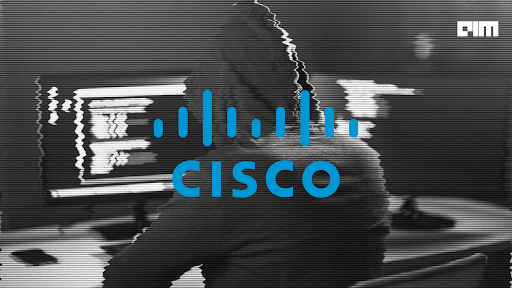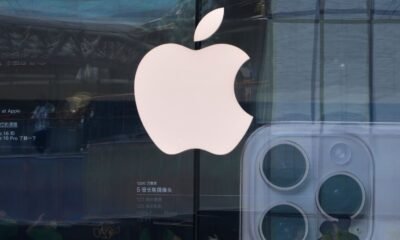Jobs & Careers
Apple Plans AI Search Tool Powered by Google Gemini, Leaves Perplexity Out

Apple is preparing to launch an AI-based web search service next year, stepping up competition with OpenAI and Perplexity AI, Bloomberg reported. The system, internally known as World Knowledge Answers, will be integrated with Siri and could later expand to Safari and Spotlight.
The new feature, described by Apple executives as an answer engine, is expected to arrive next Spring as part of a broader Siri overhaul. “The work we’ve done on this end-to-end revamp of Siri has given us the results we needed,” Craig Federighi, head of software engineering at Apple, reportedly told employees in a recent all-hands meeting.
The update will enable Siri to handle more complex queries by tapping LLMs. Apple is testing models from Google and Anthropic, while continuing to use its own Apple Foundation Models for on-device search.
According to Bloomberg, Apple has leaned towards Google’s Gemini for summarisation, citing more favourable financial terms after Anthropic sought over $1.5 billion annually for its Claude model.
The overhaul, internally codenamed Linwood and LLM Siri, will allow the assistant to summarise web results using text, images, videos and local information. Apple is also working on a visual redesign of Siri and a health-focused AI agent, slated for release in 2026.
The initiative comes as Apple maintains its $20 billion-a-year search arrangement with Google. A US judge this week ruled the deal can continue with minor adjustments, easing investor concerns.
Google’s market cap rose by about $228 billion on September 4, closing at a record high of $2.79 trillion.
However, Apple’s SVP of services, Eddy Cue, recently testified that Google searches from Apple devices have declined for the first time in two decades, noting the rise of “formidable competitors” in AI-powered search.
While Apple explored acquisitions of startups such as Perplexity and Mistral, it has opted to develop its own system. Bloomberg reported that Perplexity’s technology was seriously evaluated, but the company is no longer pursuing a deal.
Despite the push, Apple’s AI division has faced attrition. Key members of its Foundation Models team, including founder Ruoming Pang, have left for rivals like Meta, OpenAI and Anthropic.
The post Apple Plans AI Search Tool Powered by Google Gemini, Leaves Perplexity Out appeared first on Analytics India Magazine.
Jobs & Careers
Google Cloud Forecasts $58 Billion in Revenue Commitments by 2027

Google Cloud has forecasted about $58 billion in revenue commitments over the next two years, signalling the growing importance of the division to Alphabet’s future strategy as AI transforms the tech industry.
The cloud unit, which recently surpassed a $50 billion annual run rate, disclosed the figure at the Goldman Sachs Communacopia + Technology Conference, Reuters reported.
Google Cloud’s chief executive officer, Thomas Kurian, said roughly 55% of the $106 billion sales backlog is expected to convert into revenue within two years, excluding potential new contracts.
Kurian added that the customer pipeline is expanding rapidly, with a 28% quarter-on-quarter increase in new clients. Among them are nine of the world’s 10 largest AI research labs, including OpenAI and Anthropic, despite their direct competition with Google’s own AI products.
While cloud computing contributed only 14% of Alphabet’s overall revenue last quarter, it remains one of the fastest-growing segments, outpacing the company’s advertising-driven core search business.
In its July earnings update, Alphabet said Google Cloud revenue rose 32% in Q2, reaching $13.6 billion. The company has also boosted its capital expenditure plans for 2025 to $85 billion, up from $75 billion, citing rising cloud infrastructure demand.
The post Google Cloud Forecasts $58 Billion in Revenue Commitments by 2027 appeared first on Analytics India Magazine.
Jobs & Careers
Outsourcing Crackdown Looms in Washington, India’s $100 Billion IT Industry on Edge

The call to “bring jobs back to America” is echoing once again in Washington, this time with India in focus.
What began as a campaign refrain has now entered policy deliberations within President Donald Trump’s administration and among his supporters, raising the prospect of new limits on cross-border IT services.
Republican senator from Ohio, Bernie Moreno, has introduced the Halting International Relocation of Employment Act (HIRE Act).
The bill seeks to impose a 25% tax on payments made by American companies to foreign firms for services provided to US customers, mainly targeting outsourcing.
It also blocks such transactions from being tax-deductible, requires companies to report them to the government, and directs the tax proceeds into job training and workforce programs in the United States.
If passed, the measure would apply to payments made after December 31, 2025.
Right-wing commentator Laura Loomer, reportedly a close aide to President Donald Trump, claimed on X that “the President is now considering blocking US IT companies from outsourcing their work to Indian companies.”
She added: “In other words, you don’t need to ‘press 2’ for English anymore. Make Call Centers American Again!”
The scale
For Indian outsourcing firms, which have spent decades building a $100 billion export industry around US clients, the signals are troubling, especially at a time when they are already grappling with disruption from artificial intelligence and muted growth.
Most large IT companies have been reporting only single-digit revenue increases.
India’s IT and IT-enabled services industry is valued at more than $250 billion annually, with about $200 billion generated from exports. Software services exports alone stood at $190.7 billion in FY 2023–24, according to the Reserve Bank of India’s annual survey on software and IT-enabled services exports.
The United States remains the largest client market, accounting for around 54% of India’s software services exports, over $100 billion a year in outsourcing revenue flowing from India to the US.
The impact
Any move to restrict outsourcing would weigh heavily not just on corporate earnings in Bengaluru and Hyderabad, but also on the livelihoods of millions of Indian technology professionals.
The debate is being closely tracked by both the Union and the state governments. Policymakers have long been criticised for failing to secure lasting visa concessions in the critical H-1B category despite years of lobbying.
Unearthinsight founder and CEO Gaurav Vasu noted that if the HIRE Act is enacted, the first companies to be hit would be US enterprises across sectors that depend heavily on outsourcing, including Cisco, American Express, Ford, General Electric, JPMorgan, Citi, BlackRock, American Airlines, Walmart, and McDonald’s.
US corporations have long relied on outsourcing to low-cost destinations such as India, Mexico, the Philippines, and Poland, he observed. Forcing them to insource operations could significantly raise costs, hurting profitability and stock market performance. UnearthInsight estimates that insourcing could increase enterprise costs and reduce margins by 1–2%.
“The ripple effect of such a policy will extend to the global outsourcing industry, with India bearing a substantial impact,” Vasu said. “This will slow down the growth of the close to $300 billion Indian technology sector, including IT services, Global Capability Centers, and adjacent industries directly or indirectly connected to outsourcing.”
Vasu and another analyst said companies would need to adopt a wait-and-watch approach.
Stating that it is too early to comment, Karnataka information technology (IT) minister Priyank Kharge said the potential US tariffs on Indian IT services are unlikely to disrupt the country’s $280-billion export sector.
Speaking at the launch of the Karnataka Mid-Market GCC Report and the KATALYST GCC Handbook on Tuesday, he highlighted the country’s strong offshore delivery model and the global reliance on its technology talent.
Diversification a key?
Saurabh Gupta, president of research and advisory firm HFS Research, said that unlike past downturns driven by economic cycles, this crisis is man-made, with repercussions not only for Indian IT providers, but also for US enterprises that are already struggling with rising costs from tariffs.
“Any restrictions on outsourcing and broader IT services would squeeze both supply and demand sides, making delivery more expensive and less predictable,” he said.
Indian IT companies now face the challenge of diversifying markets, innovating service models, and strengthening domestic growth to cushion against tighter trade barriers.
Vasu noted that Indian IT firms are already relatively diversified, with 30–40% of revenues coming from non-US markets, where growth has been strongest. Non-US segments have been expanding at 8–12% annually.
“HCLTech saw 8.2% year-on-year growth in its ‘rest of the world’ market, Coforge 12.6%, and LTTS 26%. TCS, too, reported 10% growth in the MEA region during Q1 FY26,” he said.
“The demand environment outside the US has remained resilient, with Europe in particular driving high growth last quarter. Beyond Europe, Asia Pacific and EMEA are emerging as attractive markets, boosted by modernisation and digital transformation needs.”
A senior manager at a Big Four firm in Bengaluru, seeking anonymity, said the potential blocking of outsourced jobs could disrupt established service delivery processes, sharply raise costs for US enterprises, and dent India’s critical role in healthcare billing.
“This would have ripple effects on both nations’ economies and the healthcare sector in particular, which relies on efficient offshore billing operations,” he said, adding that he was apprehensive about his own job given his work for the US healthcare industry.
In a LinkedIn post, Accenture’s global lead for GCC Transformation & Reinvention, Sridhar M said he has been working with clients across the globe on deep tech and innovation projects.
“Today’s technology breakthroughs happen when the best minds collaborate across borders. Disrupting this interconnected ecosystem through policy interventions could mean higher costs that slow down R&D investments, reduced innovation speed when projects can’t access the right talent, and critical skill gaps that impact competitiveness,” he wrote.
Rather than viewing this as countries competing against each other, he noted, the focus should be on creating partnerships where everyone wins—local job creation and global innovation working hand in hand.
Nasscom declined to comment on AIM’s queries.
The post Outsourcing Crackdown Looms in Washington, India’s $100 Billion IT Industry on Edge appeared first on Analytics India Magazine.
Jobs & Careers
Cisco Announces Agentic Observability Features, Time Series AI Model

Cisco, the global leader in networking, security, and infrastructure, announced a suite of AI-powered observability tools at the conf. 2025 event in Boston, United States.
This includes a unified data fabric, a machine data lake, and a time series foundational model for anomaly and root cause analysis.
Together, the companies aim to help enterprises turn machine-generated data into actionable AI-powered intelligence.
Powered by Splunk, the data platform the company acquired last year, Cisco announced a new AI-powered Splunk observability agent. It deploys AI agents across the entire incident response lifecycle while monitoring both its performance and quality.
For instance, the AI troubleshooting agent is offered as part of Splunk’s Observability Cloud and AppDynamics platform, to autonomously analyse incidents and identify the root cause of issues, enabling teams to resolve them quickly.
Other agents help teams set up alert correlation, summaries of alerts, trends, impacts, and more to troubleshoot faster.
“With the latest innovations in Splunk Observability, we are empowering enterprises to proactively monitor their critical applications and digital services with ease, resolve issues before they escalate, and ensure the value and outcomes they derive from observability are commensurate with the cost,” said Patrick Lin, senior vice president and general manager of Splunk Observability.
Observability is the ability to measure a system’s internal health and performance by analysing metrics, logs, and traces. It applies in various fields, including IT operations, software development, business operations, and others.
The networking and security firm also announced observability tools for these AI agents themselves. This enables continuous monitoring of their quality, security, health, and costs, ensuring they perform as intended.
The company announced that most of these features will seamlessly integrate with several solutions and platforms offered by them and Splunk.
New Cisco Data Fabric, Time Series Foundation Model
Cisco also announced Cisco Data Fabric, powered by the Splunk platform, which helps enterprises efficiently handle machine data at scale.
Enterprises can utilise the Data Fabric for various AI use cases, such as training AI models or correlating multiple streams of both machine data and business data to generate insights.
Machine-generated data is the continuous streams of information produced by sensors, servers, applications, and network devices. This includes network packet counts, CPU/GPU utilisation, readings from data centre sensors, query response times, error codes, and more.
The data flows continuously, often generating terabytes per day from a single enterprise environment, and captures the real-time health and performance of digital infrastructure.
Cisco stated that the framework enables data management across the edge, on-premises, and cloud environments, including SecOps, ITOps, DevOps, and NetOps. It can also federate data across sources like Amazon S3, Apache Iceberg, Delta Lake, Snowflake, and Microsoft Azure, with support for additional sources next year.
Besides, the company also announced a new Machine Data Lake in Splunk, which provides an ‘AI-ready foundation’ for analytics and training AI models.
The company released a Time Series Foundation Model, pre-trained to perform pattern analysis and reasoning across machine data in the time series format. The model allows for anomaly detection, forecasting, and automated root cause analysis across the Cisco Data Fabric.
“Every company has massive volumes of this machine data, but it’s been largely left out of AI for a few reasons: LLMs don’t speak the language of machine data, the information is spread across disparate silos, and the expertise and costs involved can be prohibitive. As a result, we’ve only begun to scratch the surface of what we can do with AI,” said Jeetu Patel, chief product officer at Cisco.
Patel mentioned that although the industry has been successful in training AI models using human-created data such as text, it has not yet been fully explored with data generated by machines, which motivated the recent announcements.
The Time Series Foundation Model will be made available on Hugging Face, the open-source AI model repository, starting in November 2025.
Splunk was acquired by Cisco in 2024 for $28 billion. Their competitors in the AI-enabled observability space include companies such as New Relic. Dynatrace, Datadog, Elastic, and others.
The post Cisco Announces Agentic Observability Features, Time Series AI Model appeared first on Analytics India Magazine.
-

 Business2 weeks ago
Business2 weeks agoThe Guardian view on Trump and the Fed: independence is no substitute for accountability | Editorial
-
Tools & Platforms4 weeks ago
Building Trust in Military AI Starts with Opening the Black Box – War on the Rocks
-

 Ethics & Policy1 month ago
Ethics & Policy1 month agoSDAIA Supports Saudi Arabia’s Leadership in Shaping Global AI Ethics, Policy, and Research – وكالة الأنباء السعودية
-

 Events & Conferences4 months ago
Events & Conferences4 months agoJourney to 1000 models: Scaling Instagram’s recommendation system
-

 Jobs & Careers2 months ago
Jobs & Careers2 months agoMumbai-based Perplexity Alternative Has 60k+ Users Without Funding
-

 Podcasts & Talks2 months ago
Podcasts & Talks2 months agoHappy 4th of July! 🎆 Made with Veo 3 in Gemini
-

 Education2 months ago
Education2 months agoMacron says UK and France have duty to tackle illegal migration ‘with humanity, solidarity and firmness’ – UK politics live | Politics
-

 Education2 months ago
Education2 months agoVEX Robotics launches AI-powered classroom robotics system
-

 Funding & Business2 months ago
Funding & Business2 months agoKayak and Expedia race to build AI travel agents that turn social posts into itineraries
-

 Podcasts & Talks2 months ago
Podcasts & Talks2 months agoOpenAI 🤝 @teamganassi





















